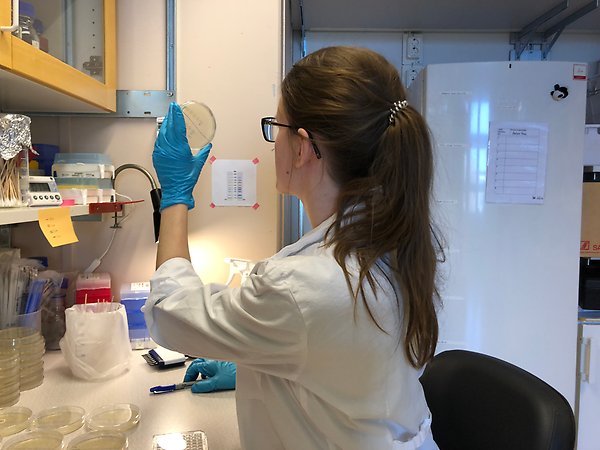Targeted eradication of bacterial pathogens
Antibiotic resistance is an increasing problem worldwide and each year 700,000 people die due to treatment failure of bacterial infections. The rising problem of multidrug-resistant bacteria makes the search for alternative treatment options absolutely necessary. One way to find new treatment approaches is to look at the bacteria themselves and how they compete with each other – that is how do bacteria kill other bacteria?
Bacteria live in communities where several different species coexist. Within these communities bacteria have to compete for resources to ensure survival and colonization. Interbacterial competition can be mediated by different mechanisms.
One example of such a mechanism is contact-dependent growth inhibition (CDI), a mechanism by which bacteria can inhibit the growth of closely related cells upon direct cell-to-cell contact. Bacteria carrying a CDI system express a toxic protein on their cell surface and upon binding to a surface receptor on the recipient bacterium, the toxin is cleaved and delivered into the recipient cell where it inhibits bacterial growth.
In this project, we aim to develop a new way of treating bacterial infections, one that specifically target pathogenic bacteria, leaving the beneficial normal flora intact. To do so we will use our knowledge about antagonistic bacterial interactions and arm beneficial bacteria with bacterial growth inhibition systems, such as CDI, to investigate their value in preventing or treating bacterial infections. In addition to treatment of bacterial infections, we will investigate if beneficial bacteria armed with these systems can be used to prevent colonization by or cure carriers of antibiotic resistant bacteria.

Student Petra Muir in the lab
Related published research
- Virtanen P, Wäneskog M, Koskiniemi S. 2019. Class II contact-dependent growth inhibition (CDI) systems allow for broad-range cross-species toxin delivery within the Enterobacteriaceae family. Molecular Microbiology 111(4):1109-1125.
- Ghosh A, Baltekin Ö, Wäneskog M, Elkhalifa D, L Hammarlöf D, Elf J, Koskiniemi K. 2018. Contact-dependent growth inhibition induces high levels of antibiotic-tolerant persister cells in clonal bacterial populations. The EMBO Journal e98026.
- Ruhe ZC, Nguyen JY, Xiong J, Koskiniemi S, Beck CM, Perkins BR, Low DA, Hayes CS. 2017. CdiA Effectors Use Modular Receptor- Binding Domains To Recognize Target Bacteria. mBio 8:2 e00290-17.
- Hayes CS, Koskiniemi S, Ruhe ZC, Poole SJ, Low DA. 2014. Mechanisms and Biological Roles of Contact- Dependent Growth Inhibition Systems. Cold Spring Harb Perspect Med 4:a010025.
